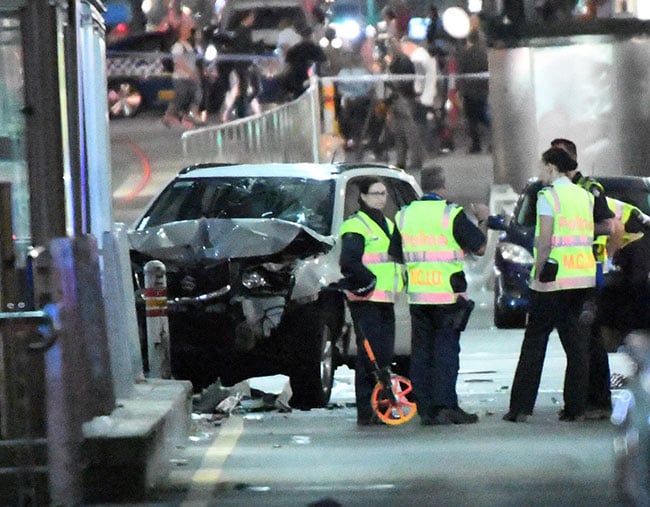A car ploughed into pedestrians crossing a busy street in Melbourne’s CBD on Thursday, injuring at least 14 people. As yet, we don’t know the driver’s motives for this act – although police believe it was deliberate.
It’s the second time this year a person has used only a car to inflict pain, chaos and fear on unwitting pedestrians in Melbourne, not to mention the number of similar attacks overseas.
The idea of being caught in a car attack like this is terrifying, but perhaps, given recent events, is one worth thinking about. Because while your capacity to avoid harm in these situations may be limited, there are things you can do to give yourself the best chance of survival.
Move laterally
Forensic engineer Dr Shane Richardson works as the managing director at crash investigation company Delta-V Experts.
He told Mamamia that if a car is coming towards you, you should move out of the way if you can. While this might sound obvious, in this unimaginable moment of fear, you may unintentionally freeze or perhaps even duck. Dr Richardson points out that moving laterally – sideways – can be a simple, life-saving measure.

